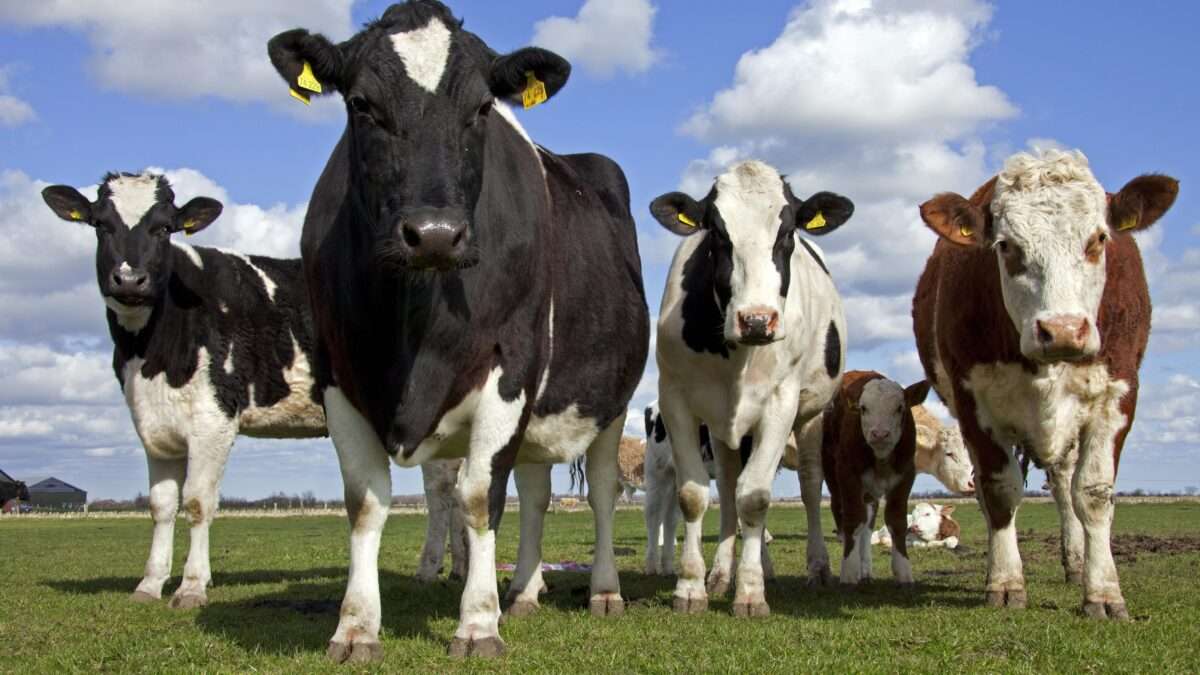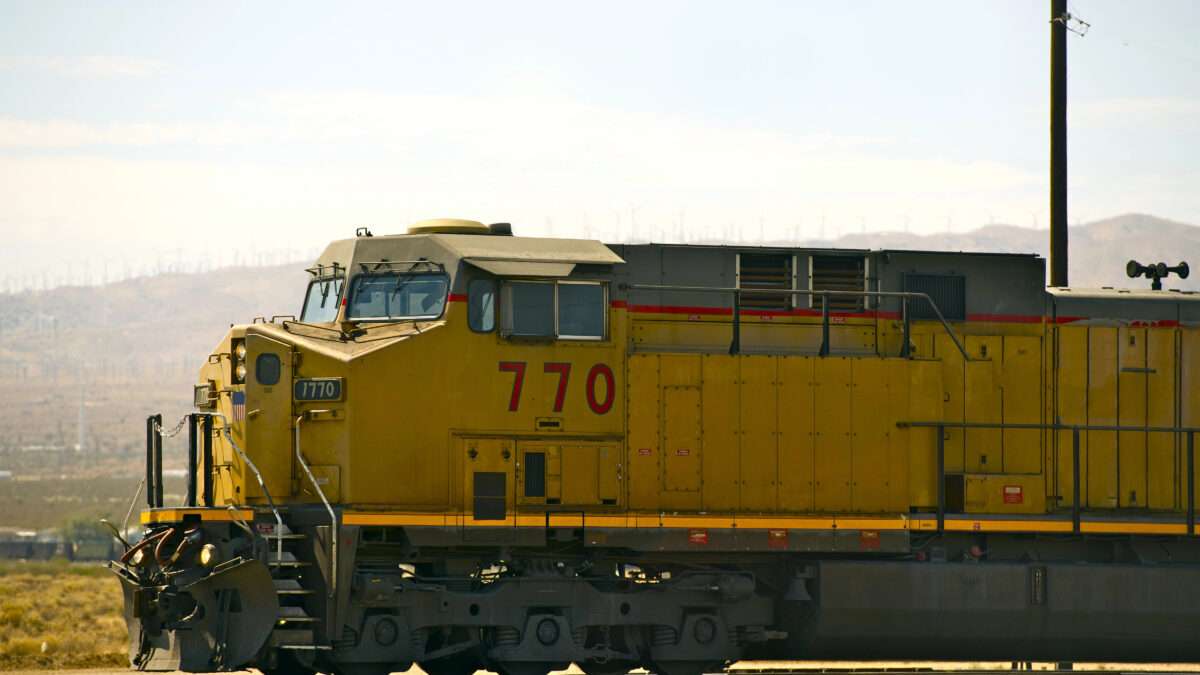The Government Wants To Track Your Steak

The government has a long history of using tracking technology to ascertain our whereabouts, our habits, and even our preferences. From cellphones and cars to snow plows and garbage trucks, governments seemingly want to track anything that moves—or moos.
The USDA recently finalized a rule—set to go into effect in a few months—that will require all cattle and bison being moved across state lines to be tagged with radio-frequency identification (RFID) ear tags. RFID technology uses radio frequency waves to transmit and collect data by way of a system of electronic tags and scanners. The technology is best viewed as a type of electronic or remote barcode, in which scanners can read an RFID chip anywhere from a few meters away to around 100 meters away. In some ways analogous to a shorter-range GPS system, RFID can track geographic location and also operate as a system of data collection and storage.
In the context of livestock, a quick scan of an RFID tag can pull up information like a cow's date of birth, weight, vaccine records, ownership history, what farms it has been to, and what movements it has made. The USDA is justifying its RFID mandate on public health grounds, claiming that it can help trace and eradicate potential disease outbreaks among livestock, such as mad cow disease or hoof-and-mouth disease.
While plausible at first blush, it is far from clear that the mandate will accomplish its intended objective, and it is very clear that it will disproportionately hurt small and independent ranchers and cattle farmers.
For one thing, most ranchers already want to be able to identify their cattle and have used physical metal tags for years to do so. Electronic RFID tags are twice as expensive as traditional metal tags and also require an upfront investment in scanners and software, making the switch cost-prohibitive for many small farms. Farmers also complain that electronic tags are harder to identify visually from a distance, which matters during cattle drives and other large and quick-paced movements of livestock. Most farmers that use electronic tags therefore also still tag their animals with traditional physical tags, necessitating a double-investment in two types of tags.
There's also the issue of tag retention. "I've talked to many people who have used these RFID tags and their cows have lost 50 percent after five years," Ken Fox, a South Dakota cow farmer and chair of R-CALF USA's Animal Identification Committee, told Wisconsin State Farmer. "By year nine or ten only 14 percent of the tags were left; and our beef cows can be with us for 15 to 20 years, so that's a serious concern." Fox also notes that the RFID scanners often need to be replaced every four or five years.
Fox points out that not all livestock operations are created equal. For dairy farmers who keep their livestock penned up, frequent replacing of tags is more logistically feasible, if still expensive. But for cattle ranchers, tag replacement can be entirely impracticable. "That just doesn't work when we've got cattle on 10,000 or 30,000 acres of range land and we handle those cattle maybe twice a year," said Fox. "If they lose those tags, how are we going to know who those cattle are?" Amish farmers have also opposed electronic tagging on moral grounds given their opposition to technology.
Large cattle operations can afford to double-tag their livestock with physical and electronic tags, and in fact, many have already done so voluntarily—which means the mandate's burden will fall heaviest on small and medium-sized farms and ranches. The USDA rule also favors large cattle operations more directly, including allowing them to use so-called "group identification" for livestock herds of a certain size and continuity.
"The new rule also provides for large-scale cattle operations to use one ID per group of a certain size, instead of one ID per animal," writes Remington Kesten in a blog post for David's Pasture, a small-scale cattle operation in Missouri. "This means that the smaller farms will actually incur more cost per animal once the mandate takes effect, than the big players will."
Worse yet, this group identification actually undercuts the USDA's entire disease-traceability rationale for mandated electronic tagging. "This intentional loophole also reduces the traceability for large farms and exporters, contradicting the USDA's primary reason for mandating RFID Ear Tags in the first place," notes Kesten.
The rule also fails on its own terms. While supporters point to the 2003 mad cow disease outbreak in Washington state as an example of a situation where electronic tagging could have allowed for quicker identification of where the disease originated, it's worth noting that the government was still able to track the original diseased cow back to its birthplace farm in Canada within 13 days.
It's also worth recognizing that livestock disease outbreaks are exceedingly rare in the United States. An article in Lancaster Farming, which takes a generally favorable bent toward the USDA mandate, notes that hoof-and-mouth disease was last found in America in 1929. Farmers such as Fox have also highlighted the successful combatting of brucellosis in the United States, which was accomplished without electronic tagging.
If anything, it is large-scale commercial farms that are most responsible for disease outbreaks. "There is no data in over a decade showing that food borne illnesses have resulted from disease on small farms," writes Kesten. "All major disease outbreaks in recent years have occurred on large farms." In other words, small and independent ranchers are bearing the brunt of a new rule in the name of fixing a problem that they have nothing to do with.
Finally, the USDA rule creates significant data privacy concerns. RFID tags cannot distinguish between scanners—which are portable and easily carried in hand—so potentially anyone with a scanner could access the data contained in each tag. Ominously, the USDA rule opts to use the term electronic identification tags instead of the RFID acronym, although for now RFID tags are the only technology approved by the USDA for livestock tagging.
This flexible language means that USDA is explicitly leaving the door open to even more comprehensive tracking technology. This could come in the form of "active" RFID tags (instead of "passive" ones as currently contemplated) that have a greater range of readability or even GPS tracking of cows via satellites.
One small beacon of hope for American ranchers is that Congress appears to finally be waking up to the USDA's overreach. Sen. Mike Rounds (R-S.D.) recently introduced legislation that would prohibit the USDA from implementing any rule that mandates electronic tagging technology for cattle and bison.
The USDA is attempting to find a solution for a problem that has already been largely addressed through current practices.
Fox puts it more colorfully: "Someone told me this story—NASA spent millions trying to develop a pen that could work in sub-zero temperatures and zero gravity. The Russians just used a pencil."
The post The Government Wants To Track Your Steak appeared first on Reason.com.





